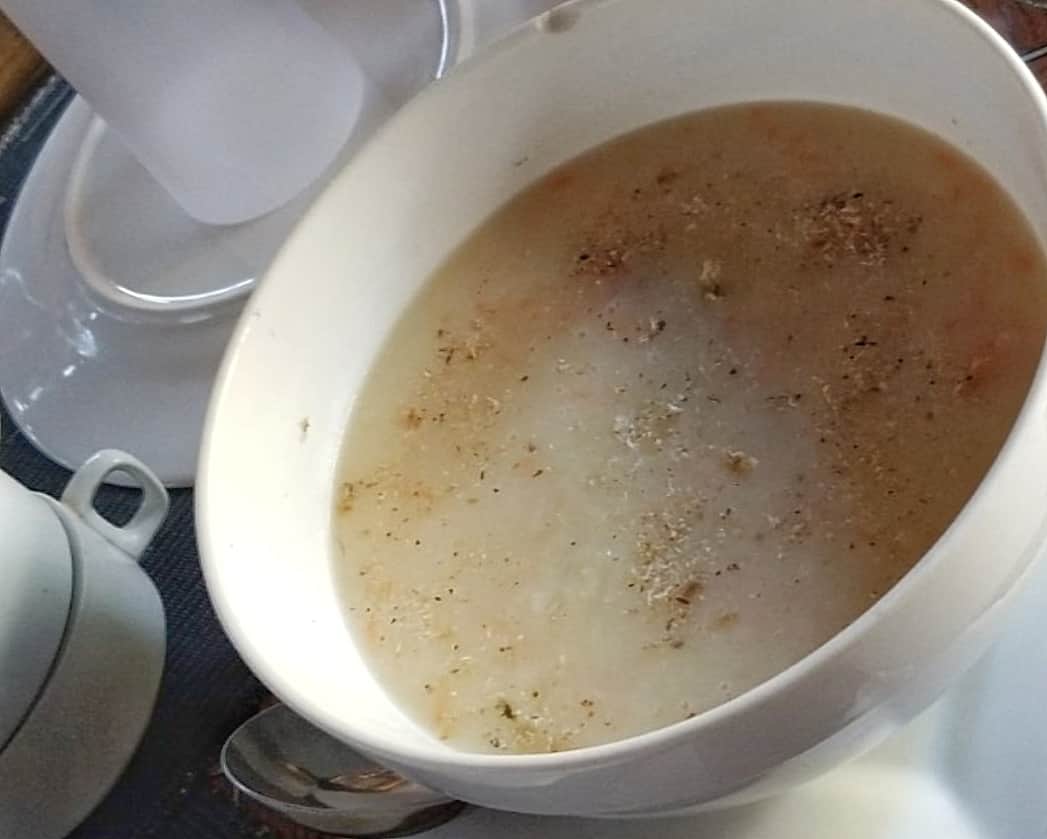
Ever wonder what dried bird spit tastes like?
Nope?
Well, me neither but in case you answered “yes” for some strange reason, here is our adventure in tasting Nido Soup, aka the Filipino version of Bird’s Nest Soup.
A visit to Palawan, Philippines
On our recent trip to Busuanga in the Philippines, we spent a few days hopping between the Palawan islands. With jagged cliffsides jetting out of bright turquoise waters, Palawan is home to some of the best islands to visit in the Philippines.
These island cliff sides hold a secret. There is an ingredient that is believed by many to hold a number of medicinal benefits. These include anti-aging properties and the ability to improve concentration. It is even said to increase libido. This elusive ingredient can fetch anywhere from $2,500 to $10,000 per kilogram. So what is it you ask?
Related Content: Filipino Street Food: 15 Must eats for the Traveling Foodie


The nests of the swiftlet bird
Swiftlets are cave-dwelling birds native to southern Asia, the South Pacific islands, and northeastern Australia. Nests are created from a mixture of seaweed, twigs, and other objects held together by a natural glue, the swiftlet’s saliva.
Traditionally, these nests are collected from the wild. For centuries, climbers would scale cliffsides and caves scouting for hardened nests ready for harvesting. They are located at incredible heights making it difficult to see into the nests before harvesting. As a result, nests are often plucked with eggs and young swiftlets still inside.
Due to the negative impacts of this practice on the swiftlet population, countries across southeast Asia now build special houses for the birds to nest in. The usage of these swiftlet farms has helped to protect and in fact grow the swiftlet population.
After the nests have been harvested, tiny tools are used to tediously remove foreign objects. Feathers and twigs are extracted until all that’s left are the edible threads of saliva. This ingredient is sold and transformed into culinary dishes made popular by Chinese cuisine. These dishes include jellies, egg tarts, congee, and most commonly Bird’s Nest Soup also commonly referred to as “bird spit soup”.
Nido Soup, the Filipino version of Bird’s Nest Soup
Now going back to the beginning of my story: while exploring the islands of Palawan, our guide mentioned that we might be able to find this Bird’s Nest Soup in Coron Town. I am not one to believe in supposed aphrodisiacs and cure-alls, yet I was intrigued to try something so bizarre as bird spit soup. (So I guess I did wonder what bird spit tasted like after all.)
We hunted down Kawayanan Grill Station in Coron Town. This restaurant is known for serving both exotic and local dishes including Nido Soup, the Filipino version of the original Chinese recipe. Scott’s tummy is a bit more temperamental than mine so he politely refrained from partaking in my bowl of soup.
Related Content: Best Street Food Around the World: The Ultimate List
The taste test: What does Bird’s Nest Soup taste like?
Knowing the contents of this dish, I was expecting to experience strong earthy flavors from the twigs combined with a salty briny flavor from the ocean. My prediction was all off. The high protein content of the swiftlet saliva creates a gelatinous texture. It is a tiny bit slimy but smooth and mild in taste. I found the flavor similar to concentrated chicken broth and the texture comparable to that of egg drop soup.
It wasn’t the best soup I have ever had, and it definitely did nothing for my libido…not like Scott wanted to kiss me after consuming bird spit anyway. However, I would still consider Filipino Bird’s Nest Soup a little culinary micro-adventure in my book.
Frequently Asked Questions about Bird’s Nest Soup:
How to cook Bird’s Nest Soup?
Depending on where you are in the world, the primary ingredient of the soup may be difficult to find. Bean threads can be used as a suitable and sustainable alternative.
Sauteed onions are cooked in chicken broth with corn, ham, and the bird’s nest. Cooked chicken is shredded into a flaky consistency and added to the soup along with a bit of sherry and cornstarch. Egg whites are beaten in a separate bowl and then folded into the soup, similar to Egg Drop Soup. The finished Nido soup is finished with freshly ground pepper.
Why is it called Nido Soup?
Nido Soup is the Filipino version of the popular Chinese dish, Bird’s Nest Soup. The Filipino version is named aptly for the location where the nests are harvested, El Nido, Palawan.
Disclaimer: We are always open to exploring new tastes and flavors while traveling, but we do try to keep sustainability and environmentally responsible factors in mind. The once dangerous and harmful practice of harvesting birds nests in the wild has been replaced by urban nest-farming to secure the wellbeing of both the birds and nest-pickers.
Like what you see? Share it with your friends!






![LIVING IN SOUTH KOREA [SHARING OUR EXPERIENCE]](https://som2nynetwork.com/wp-content/plugins/phastpress/phast.php/c2VydmljZT1pbWFnZXMmc3JjPWh0dHBzJTNBJTJGJTJGc29tMm55bmV0d29yay5jb20lMkZ3cC1jb250ZW50JTJGdXBsb2FkcyUyRjIwMjUlMkYwNyUyRkxpdmluZy1pbi1Tb3V0aC1Lb3JlYS0zMzZ4MjIwLmpwZyZjYWNoZU1hcmtlcj0xNzUzOTcyMTQwLTEzNTM4JnRva2VuPTAxYTUxNzJkOGU0ZDhlMDE.q.jpg)

